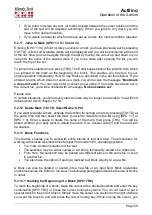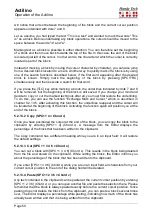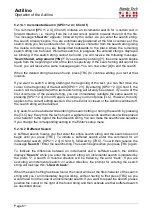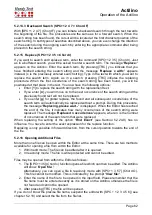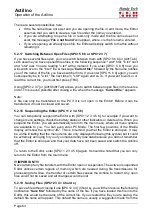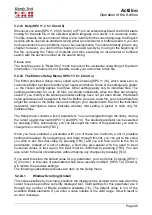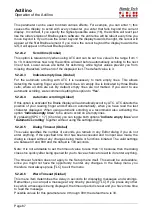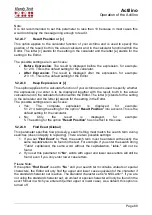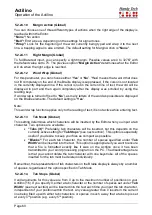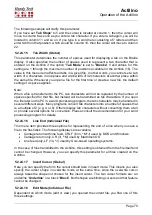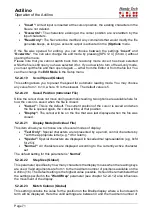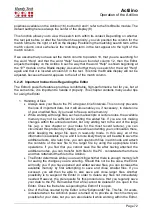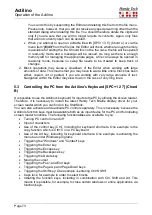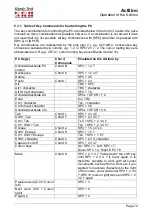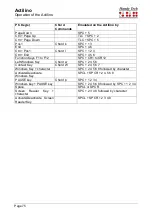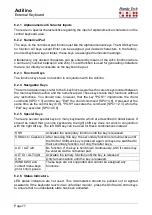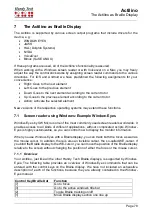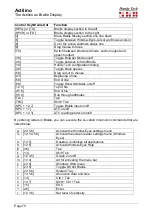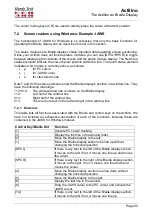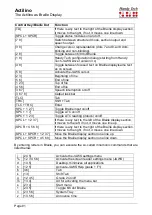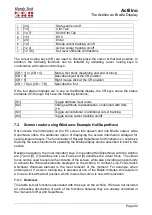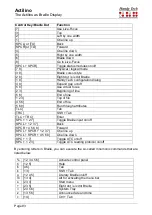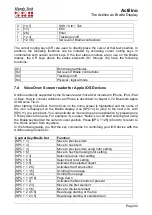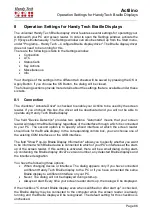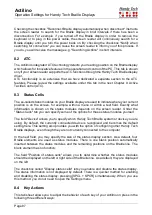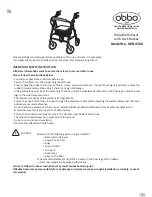
Actilino
Operation of the Actilino
Page 72
positions available on the Actilino (16), but both 0 and 1 refer to the first Braille module. The
default setting here is always the center of the display (8).
This function allows you to view the search term within its context. Depending on whether
the text just before or after the found term has priority, you can position the column for the
match further to the right or left on the display. Positioning the matching search term at the
match column occurs whenever the matching term in the text appears to the right of the
match column.
If we assume that you have set the match column to position 10, that you are searching for
the word "Help" and that the word "Help" has been found at column 12, then the Editor
adjusts the display on the Actilino in such a way that the word "Help" is shown beginning at
the 10
th
module on the Braille display. Assume further that you search for the word "Help"
again and that it is located at column 8 in the text. This time the Braille display will not be
adjusted, because the word appears to the left of the match column.
5.2.25 Important Instructions Regarding the Editor
The Editor's powerful features provide a comfortable, high-performance tool for you, but at
the same time, it is important to handle it properly. This chapter contains many useful tips
for using the Editor.
1. Handling of files:
•
Always save your files to the PC at regular, brief intervals. This not only prevents
the loss of important data, but it will also enable you, if necessary, to delete one
of your unedited files, if you need to free up some memory.
•
While working with large files, such as manuscripts or lecture notes, the available
memory may not be sufficient for writing the edited file. If you are not making
changes within the entire document, but only adding text to the end of the large
file (e.g. a new chapter or your notes for the most recent lecture), you can
circumvent this problem by creating a new file and writing your continuation there,
while keeping the larger file open in read-only mode. In this way, all of the
information is available to you and it is more likely that you will be able to save the
additional texts. At a later time, you can open both files in edit mode and attach
the contents of the new file to the larger file by using the appropriate block
operations. If you find that you cannot save the file after having attached the
additional notes, you can transfer both files to the PC, concatenate them there
and then retransmit that file to the Actilino.
•
The Editor determines while you are working whether there is enough memory left
for saving the changes you are entering. Should this not be the case, the Editor
will notify you. If you have opened and edited several files, you can increase the
available memory by first attempting to save and close smaller files. If you
succeed, you will then be able to also save and close larger files. Another
possibility is to suspend the Editor in order to delete any files not immediately
needed. However, the prerequisite for this procedure is that you regularly save
your data to the PC. Remember that a file cannot be deleted if it is open in the
Editor. Close the file before suspending the Editor if it is open.
•
One of the files needed by the Editor is the "$clipboard$" file. This file, if it exists,
is deleted when the Actilino's power is turned on to provide as much memory as
possible for your data, but you can also delete it while working within the Editor.

